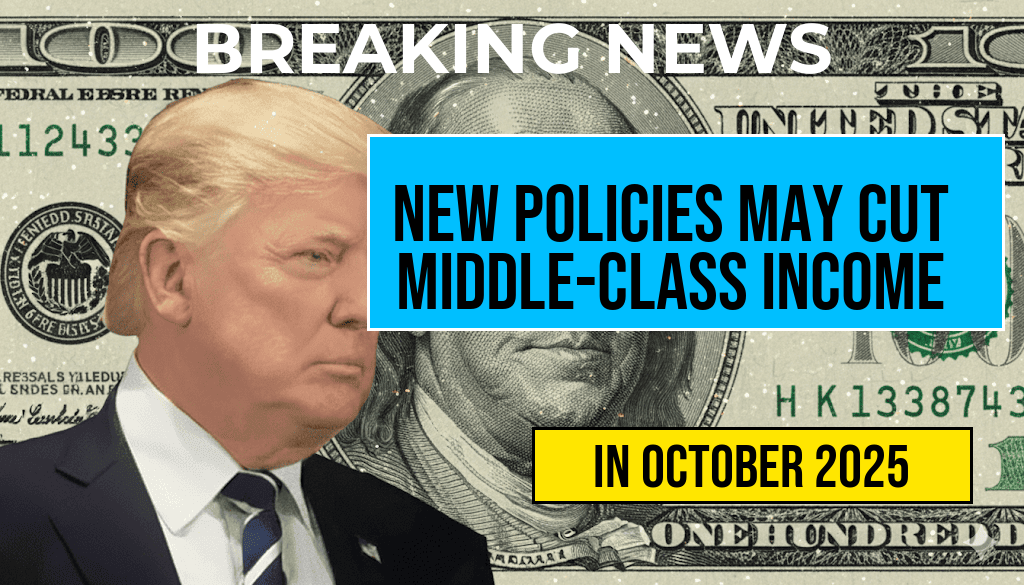As policymakers navigate a complex economic landscape, recent analyses suggest that new fiscal policies could significantly impact the financial stability of middle-class families in the United States. Research indicates that average middle-class income may decline by approximately $1,300 by 2027 if current trends continue. Various factors contribute to this forecast, including adjustments in tax regulations, inflationary pressures, and shifts in labor market dynamics. Experts warn that these changes could exacerbate existing financial challenges for millions of Americans, prompting calls for a reevaluation of proposed legislation to safeguard the economic well-being of the middle class.
Understanding the Economic Landscape
The middle class, often seen as the backbone of the American economy, has faced numerous challenges in recent years. Rising costs of living, coupled with stagnant wages, have strained household budgets. The anticipated decline in income is attributed to several key policies that are currently under discussion.
Key Factors Behind the Income Decline
- Tax Reforms: Proposed changes to tax brackets and deductions could disproportionately affect middle-income earners, leading to a reduction in take-home pay.
- Inflation: Persistently high inflation rates are eroding purchasing power, making it increasingly difficult for families to maintain their standard of living.
- Job Market Shifts: Automation and globalization have altered the job landscape, resulting in fewer well-paying positions for middle-class workers.
Projected Impact on Households
According to a report by the Economic Policy Institute, the potential decrease in income could have far-reaching effects on household spending and savings. Families may find themselves tightening their budgets, impacting local economies reliant on consumer spending. The following table illustrates the projected changes in household income over the next few years:
| Year | Average Income | Income Change |
|---|---|---|
| 2023 | $68,000 | N/A |
| 2024 | $67,500 | – $500 |
| 2025 | $66,800 | – $700 |
| 2026 | $66,000 | – $800 |
| 2027 | $66,000 | – $1,300 |
Policy Responses and Public Sentiment
In response to these projections, some lawmakers are advocating for policies aimed at bolstering middle-class income. Proposed measures include enhanced tax credits, increased minimum wages, and investments in education and job training programs. However, public sentiment remains divided, with many citizens expressing skepticism about the effectiveness of these interventions.
Polling data from the Pew Research Center reflects a growing concern among Americans regarding their financial futures. Many feel that the current political climate does not prioritize middle-class interests, leading to frustration and distrust in government initiatives. As these discussions unfold, stakeholders from various sectors are calling for a more inclusive approach to economic policymaking.
Looking Ahead
The potential decline in average middle-class income by $1,300 by 2027 serves as a wake-up call for both policymakers and citizens alike. With the financial stability of millions at stake, it is crucial for leaders to consider the long-term implications of their decisions. As the nation grapples with these challenges, ongoing dialogue and engagement will be vital in shaping a more equitable economic future.
For further details on economic policies affecting the middle class, you can refer to resources from the Economic Policy Institute and Pew Research Center.
Frequently Asked Questions
What are the new policies mentioned in the article?
The new policies refer to legislative changes aimed at modifying tax structures, social welfare programs, and economic regulations that may impact the financial stability of the middle class.
How will these policies specifically affect middle-class income?
The proposed changes could lead to a reduction in average middle-class income by approximately $1,300 by the year 2027, primarily through increased taxation and decreased benefits.
Who will be most affected by the income reduction?
The middle-class households, particularly those earning within the median income range, are expected to be the most affected by these income reductions, as they rely heavily on the current tax and welfare systems.
What can individuals do to mitigate the impact of these policies?
Individuals can consider financial planning strategies, such as adjusting their budgets, exploring additional income sources, or advocating for policy changes that support the middle class.
Is there any indication that these policies could change before 2027?
While the policies are currently proposed, ongoing public discourse and potential legislative amendments could lead to changes; however, there is no guarantee that the income reduction will be reversed before 2027.

Leave a Reply